Orangutans. If you are one of those who enjoys discovering the wildlife of the places you visit, these animals may be one of the first things that come to mind when you hear the word Borneo.
Of these beautiful and intelligent primates which remind us so much of ourselves, there are three species: the Bornean orangutan (Pongo pygmaeus), the Sumatran orangutan (Pongo abelii), and the Tapanuli orangutan or Batang-Toru (Pongo tapanuliensis). Although at first glance they may seem similar, there are morphological and geographical distribution differences between them.
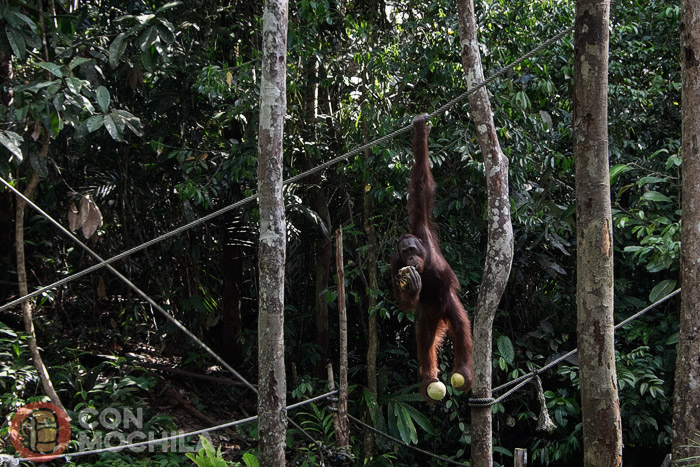
But today I will only talk about the first one, the one I was “lucky” enough to see. I say lucky because it is an animal in serious danger of extinction and who knows if in a few years it will be possible to continue seeing them in the wild, and I say this in quotation marks, because the places where I saw them are not where I would have liked.
Despite the great work of both recovery centers we visited and the fact that they were on the list of places to visit from the very beginning, I wish they were not necessary.
Orangutan, orang-utan in Malay, which means “man of the jungle”. Nice name, isn’t it? Despite the poetic nature of its name, it is ironic that these beautiful animals are losing their precious jungle, and that the only ones to blame are us humans.
The logging and cultivation of palm oil, which is widely, are causing them to lose their habitats, suffocating them to such an extent that on too many occasions they are forced to look for food where they are not welcome, risking their lives in the process (here you can see in an animated video what the problem is with the unstainable production of this oil).
And if losing their habitat wasn’t enough of a misfortune, the shadow of poaching threatens to follow them to every corner where they try to take refuge.
The number of specimens has thus been drastically reduced, threatening the existence of this great Asian ape, which is still in danger of extinction. (The Bornean orangutan is classified as Critically Endangered on the IUCN Red List and is listed on CITES Appendix I.)
The situation is alarming and yet hectares of forest continue to be burned as if it were nothing, as if the lives of so many species were not being lost (among those affected are also rhinos, tigers and elephants), nor is the livelihood of communities who live from and in the jungle being ruined.
Just when we returned to Malaysia, our friends living there told us that a thick smoke from forest fires in Indonesia, caused by the clearing of land for the subsequent palm pol plantations, had been blocking the sun for a whole month.
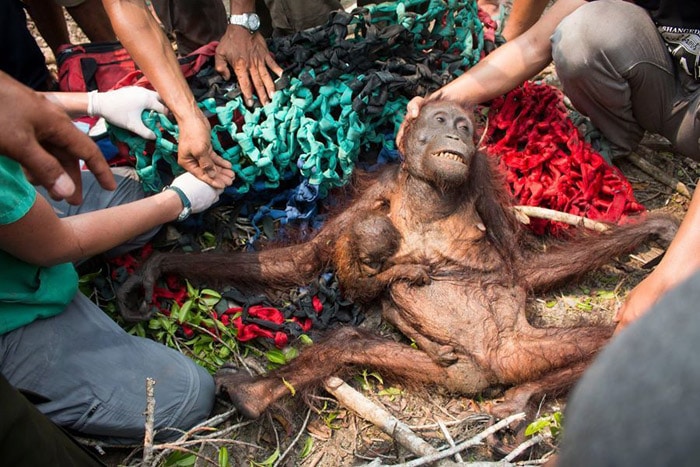
Despite the dire situation orangutans face, there is a glimmer of hope in the form of recovery centers that are working tirelessly, against all odds, to fight the selfishness, apathy, and boundless human stupidity that are driving them toward extinction.
There are several rescue centers, recovery centers or sanctuaries spread across the two countries that share the island of Borneo, and which, with varying degrees of success, care for the most vulnerable and injured specimens of this species. We visited one in each Malaysian province, ready to learn, enjoy and share everything: Sepilok Orangutan Rehabilitation Centre and the Semenggoh Wildlife Centre.
Probably the most popular in Malaysia is this rehabilitation center, the Sepilok Orangutan Rehabilitation Centre, which is located in Sabah province, 32 km from the city of Sandakan and within the Kabili Sepilok Forest Reserve.
Open since 1964, it was founded to rehabilitate orphaned or injured babies rescued from areas threatened by logging and poaching. It also houses animals rescued from captivity that were used as pets.
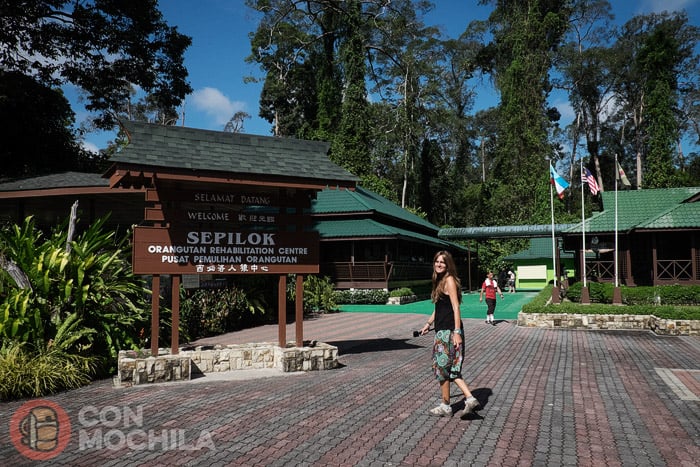
When the animals arrive at the center, they are checked to see their physical condition and to determine if there are any health problems that need to be treated.
Once the quarantine period is over (essential to prevent the spread of infectious diseases to other orangutans), rehabilitation begins, the purpose of which is to prepare the animal to live in freedom.
To do this, they will have to learn basic things from older specimens, such as finding food or climbing, since these are animals that spend most of their lives in the treetops, high up in the tallest trees.
Since October 2014, it has been possible to observe part of the rehabilitation of the little ones from a glass-enclosed stand where the “nursery area” can be seen without disturbing the animals or interfering in the process. In this nursery there are wooden structures and ropes that resemble swings and the babies learn to climb and exercise while having fun and always under the watchful eye of their caregivers.
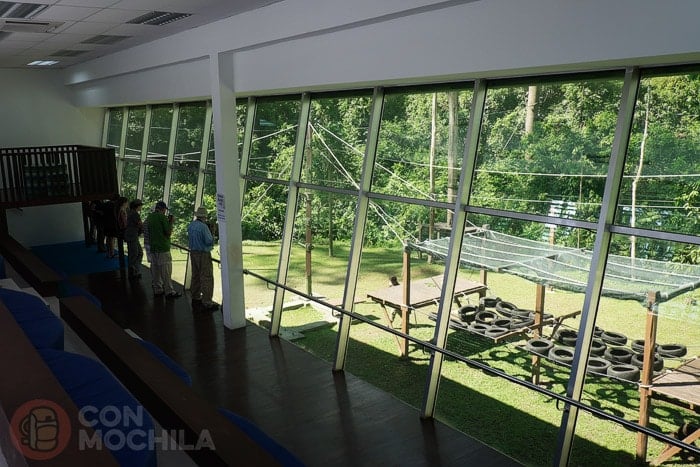

When the learning process is complete, they are released into the surrounding jungle and the animals begin to survive and fend for themselves.
At first, these orangutans do not stray far from the area where they have been living for the past few years, visiting the feeding platforms on a daily basis, where they are given food a couple of times a day.
They come there when they are still adapting to the new environment but, little by little, as they become more self-sufficient, they stop showing up there.
It is very important not to vary the fruits they are fed during this transition period (which are usually bananas and coconuts), thereby boring them with that food and encouraging them to seek another one on their own. When they no longer return, the rehabilitation process is considered to be successfully completed.
Feeding times are the best opportunity to see the orangutans. They take place at 10 a.m. and 3 p.m. and both last about an hour.
From a platform, a man with a basket full of fruit waits for the hungriest or laziest orangutans to arrive. The meal is quite a spectacle for tourists who come to try their luck and try to see them.
There are usually a lot more people in the morning and you can enter the venue twice with the same ticket.
It should be noted that during the fruit season it is more difficult for animals to appear, since getting food is very easy for them and they do not need the help of humans.
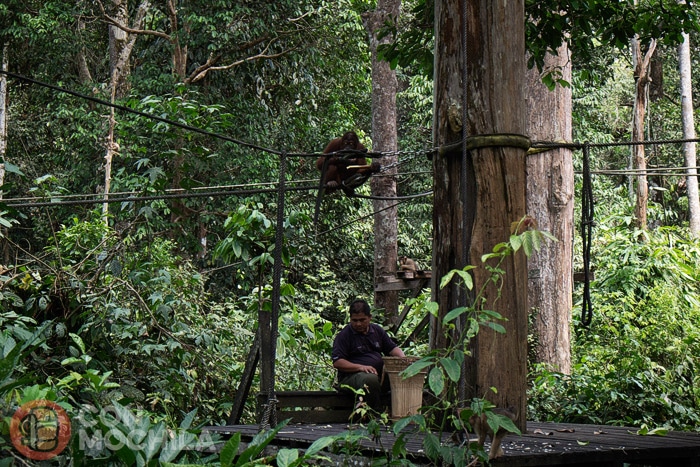
The area reserved for tourists consists of wooden walkways from which you can access various parts of the centre. On some occasions, the orangutans appear on these walkways, giving more than one person a scare or a surprise.
Of course, contact with them is strictly prohibited because, in addition to being unpredictable animals, there are diseases that can be transmitted from our species to theirs and vice versa.
Right next to the orangutan center is also the Bornean Sun Bear Conservation Centre, which, although much less prominent, does equally commendable work with the bears and is well worth a visit.
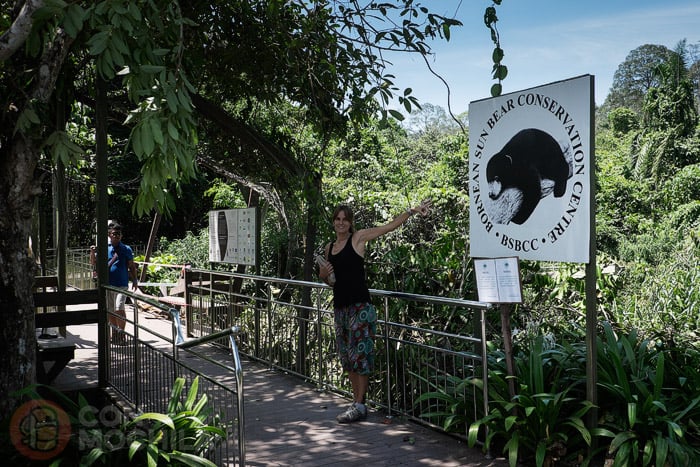
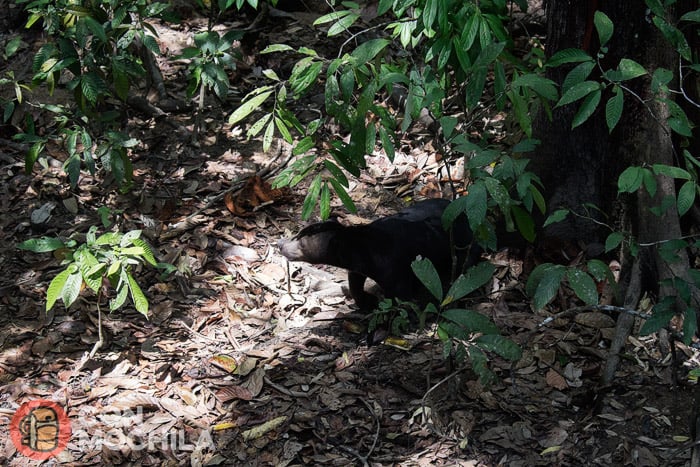
Located in Sarawak province, 24km from Kuching and for some reason somewhat less well-known than the previous one, is the Semenggoh Wildlife Centre. Founded in 1975 in the Semenggoh Nature Park, the center also takes in injured, orphaned, or captive wild animals taken as pets for the purpose of rehabilitating them.
It also plays an educational role, showing tourists the importance of conservation.
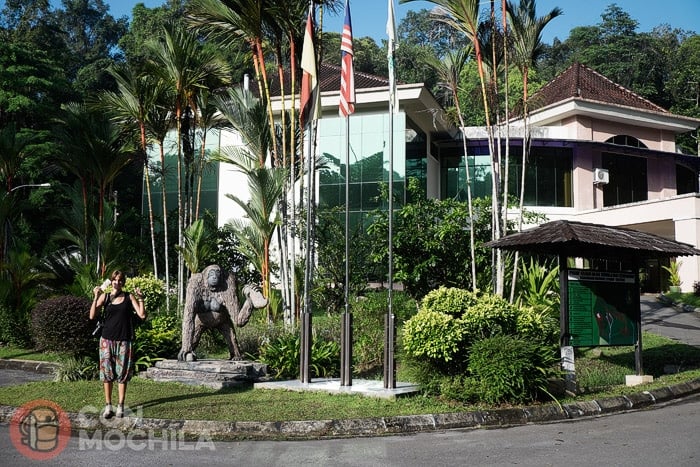
Among the species that the center has cared for are many mammals, birds and reptiles, but it is the orangutans that have managed to take centre stage and their rehabilitation programme has made them popular.
The way of caring for them is the same as its counterpart in Sepilok although, according to what I have read on the Sarawak Forestry website, the rehabilitation process for the new specimens that arrive is currently done at Matang Wildlife Centre.
However, the rehabilitated animals still live in the area surrounding the center and there is always the opportunity to see them during feeding time. We saw a couple of them during the afternoon shift.
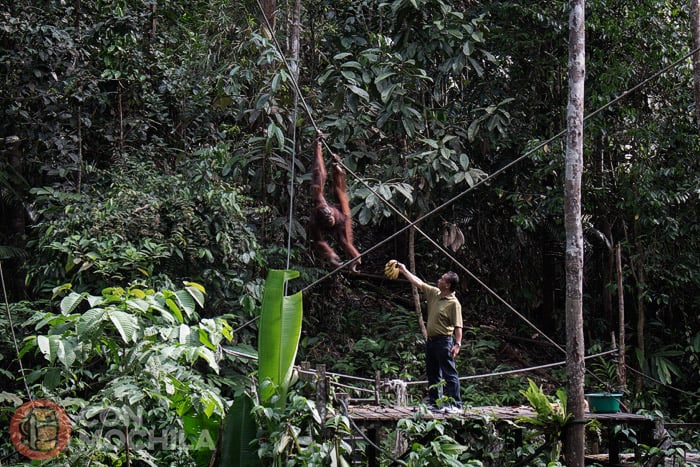
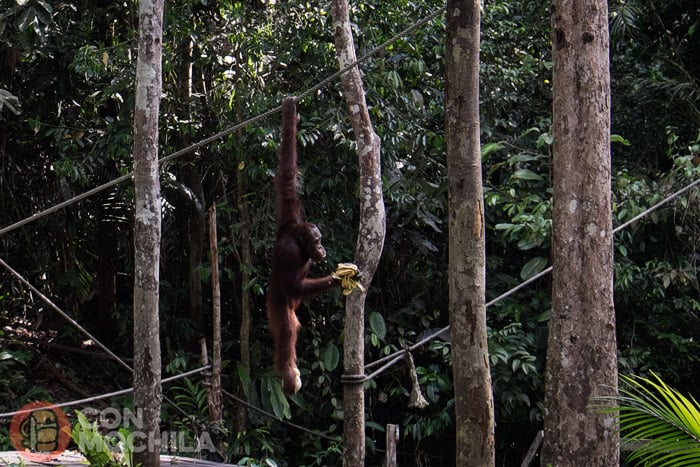
NOTE: Although these centers receive hundreds of visitors every week, it must be remembered that this is not a tourist attraction (although it may seem like one during feeding times) nor a zoo, and no one or anything guarantees that the orangutans will appear and that we can see them, since they live in semi-freedom.
In the worst (or best) case scenario, you have to think that if they don’t go after food, it’s a good sign after all, because it means they are independent and don’t need help from humans to survive.
If you want to avoid or reduce the use of palm oil, here you can see the list of everyday products that contain it, as well as the terminology used on the labels.
But according to WWF, palm oil does not always have to be unsustainable and they explain why simply boycotting its use would not serve any purpose.
“Producers, traders, manufacturers, investors and consumers can all contribute to a system in which enough palm oil is produced to meet the world’s needs, while the environment, animals and local communities are protected.”
How? Some companies use sustainably sourced palm oil. To find out if the product you want to buy uses it or not, you should look for the RSPO acronym on the label.
However, there are voices that claim that being a member of the RSPO, or being supplied by a member, is no guarantee of sustainability. According to the website Aceitedepalma.org (in Spanish), “one of the main criticisms of the RSPO is that it still allows the planting of oil palms in peatlands or marshy areas and the clearing of secondary forests,” but “it is currently the only organisation that promotes a sustainability standard for the palm oil industry.”
The conclusion is that “Although RSPO is not the ultimate solution, it is all that currently exists to control palm oil production and is the first step towards demanding sustainability.”
Greenpeace‘s website tells us that in 2013 they established POIG (Palm Oil Innovation) whose objective is to support the RSPO through the construction of standards and commitments.
Here is a very comprehensive guide which explains at the outset what palm oil is, how it is produced and the risks of unsustainable production. It offers ecological alternatives explaining why we cannot simply boycott this industry.